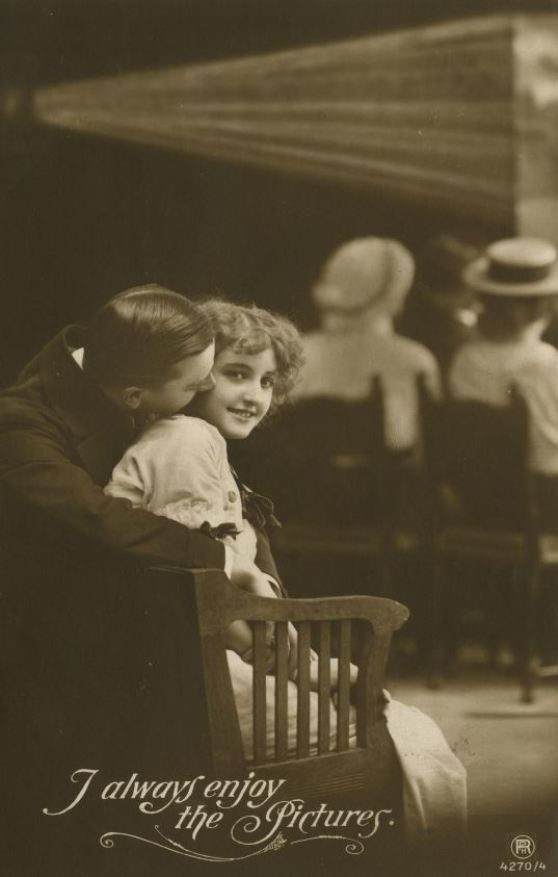Source: John Baxter, A Pound of Paper: Confessions of a Book Addict (London: Doubleday, 2002), pp. 103-106
Text: But then, around 1965, whatever it was that made the Sixties such a distinctive decade began to work its liberating magic on Australia. Hints of other lifestyles and different points of view drifted across our skies like UFOs. Some saw them in the literature of the Beat Generation, others in rock music, but for me the vehicle of revelation was the movies.
Most Saturdays, I’d stop book hunting around noon, buy a slab of roast pork-belly at the Chinese takeaway on Campbell Street, watch the owner hack it into slices with his cleaver, then carry it with a bottle of Coke across the road to the Capitol Cinema. There I would pay, in those pre-decimal days, 2s 6d for a ticket and search the empty circle for a seat without protruding springs to spike my backside, and where I could munch the deliciously greasy spiced meat with no risk of being rousted by some officious usher.
A few moments usually remained before the start of the first film in the day’s double bill to contemplate John Eberson’s flaking midnight-blue ceiling, and wonder how it would look with its tiny stars illuminated — a feature rusted up long before I discovered the place. Since then, the Capitol has been restored and even its stars shine once more, but in those days its greatest appeal resided in its shabbiness, offering as it did both cheapness and anonymity. One could lose oneself in the warm dark — ‘lie low,’ as Leonard Cohen said, ‘and let the hunt go by’.
But what drew me back every week was the films. Mostly black and white and Italian or French, invariably dubbed into English, cut down to a jerky ninety minutes, and further hacked by the film censor, they reflected lives utterly alien to someone who’d never eaten an olive, seen a subtitled film, spoken to a Frenchman or kissed a girl, let alone slept with one.
Occasionally, during my adolescence, a foreign film had reflected back some flashes of my own experience — a 1954 movie called The Game of Love, for instance (a title attached by British distributors to almost anything French where the heroine removed a garment more intimate than a cardigan). Two teenagers, friends since infancy, meet at the same resort every year. They’re too shy to do anything about their mutual attraction until an older woman seduces the boy. The experience frees him to see his childhood friend for the first time, but undermines their uncomplicated love. An adaptation, in short, of Colette’s Le Blé en herbe — Ripening Seed. But its world of the beach and holidays was familiar enough to hint at lessons I might put into practice, some time, with some woman, if I ever got to know any.
Anybody in Australia hoping to learn about life from the cinema faced an uphill struggle in the Sixties. Nudity, violence, horror, obscenity, blasphemy and sedition — the censors cut them all. In the film of John O’Hara’s Butterfield 8, Liz Taylor, explaining to Eddie Fisher how she came to be a ‘party girl’ — i.e., part-time prostitute — traces it back to childhood, when a boyfriend of her mother’s, whom she regarded as a sort of uncle, took her on his knee and ‘interfered with’ her. Liz goes on, ‘But the worst thing was…’ At which point the film hiccuped, the sure sign of a cut. The next shot was of Fisher, looking bemused. Only much later did we discover that Liz said, ‘But the worse thing was, I enjoyed it.’ Enjoying sex? Obviously that had to go.
Interesting as I found the occasional flashes of eroticism in foreign films, the one that got me thinking most had no sex at all. The version presented at the Capitol was known as The Bandit’s Revenge, though it was actually called Salvatore Giuliano. Set in the rocky landscape of Sicily, it was a half documentary / half drama about a young man — face never seen — who, dressed in an incongruous grey dustcoat and with a World War II machine gun over his shoulder, led his gang against … who exactly? I couldn’t make that out. It would be years before I decoded the film, but Francesco Rosi’s darting direction remade my sense of how a story is told, as did the near-operatic behaviour of the characters – the old man who walks to a hilltop, for instance, and apostrophizes his native land like a character from Greek tragedy. Above all, the ink black and lime white of Gianni di Venanzo’s photography prepared me for Antonioni and the French new wave, just as the content lured me to history, politics, and, above all, to Europe.
Comments: John Baxter (1939- ) is an Australian writer of science fiction, film criticism and memoir. The cinema to which he refers is the Capitol Theatre, Sydney. The films he mentions are Le Blé en herbe (France 1954), Butterfield 8 (1960) and Salvatore Giuliano (Italy 1954).



